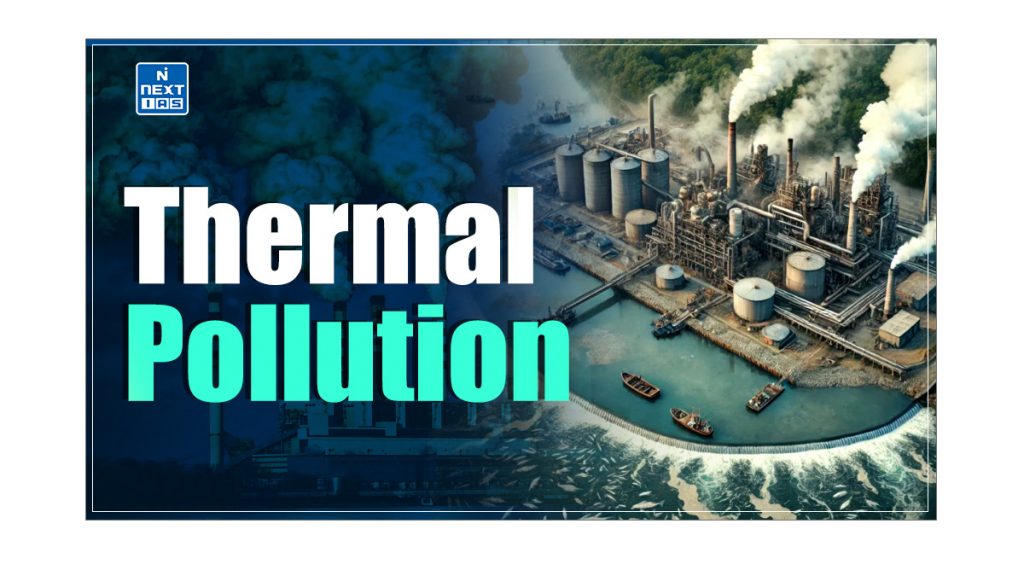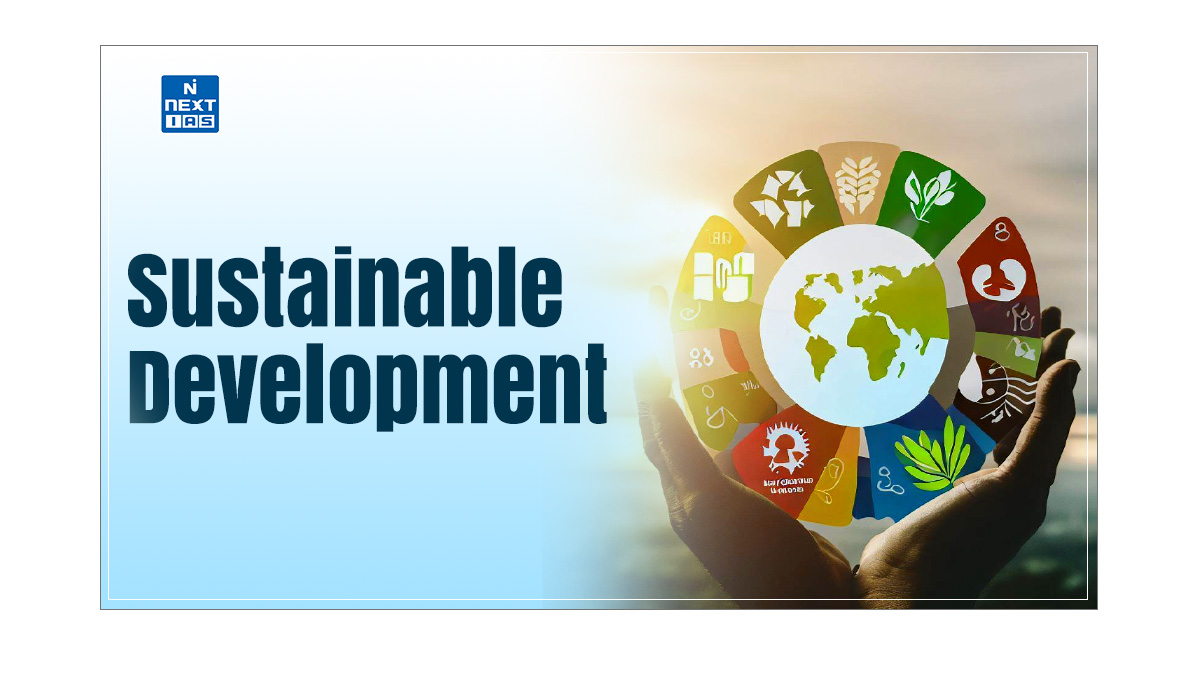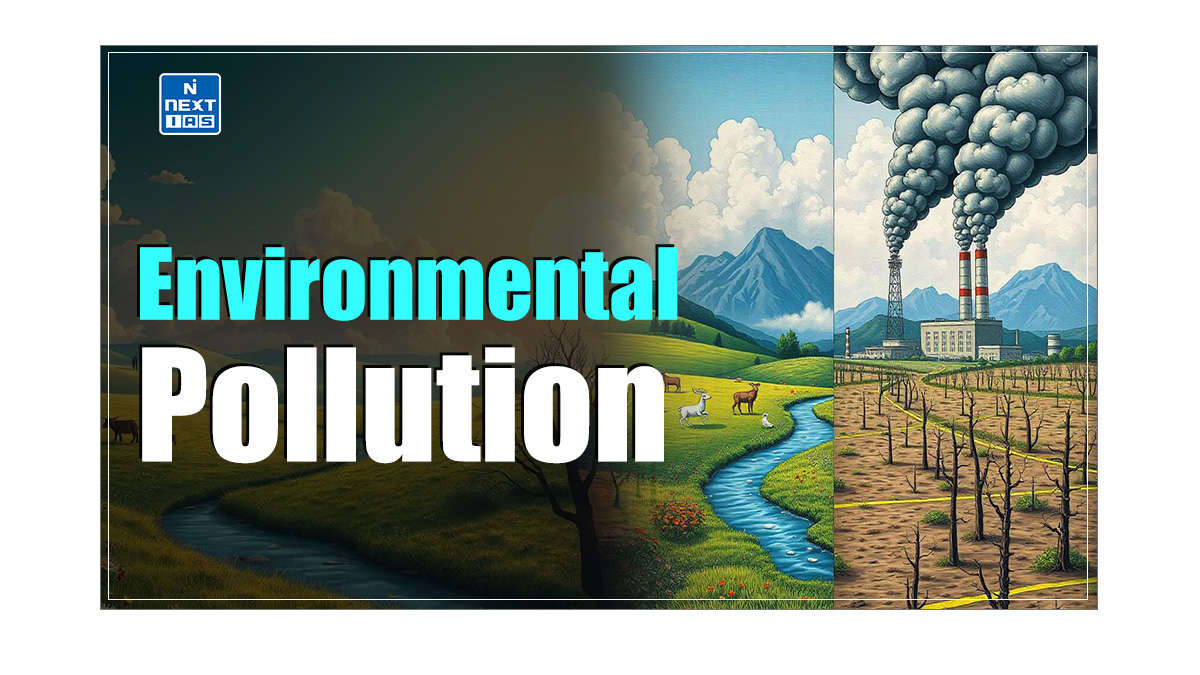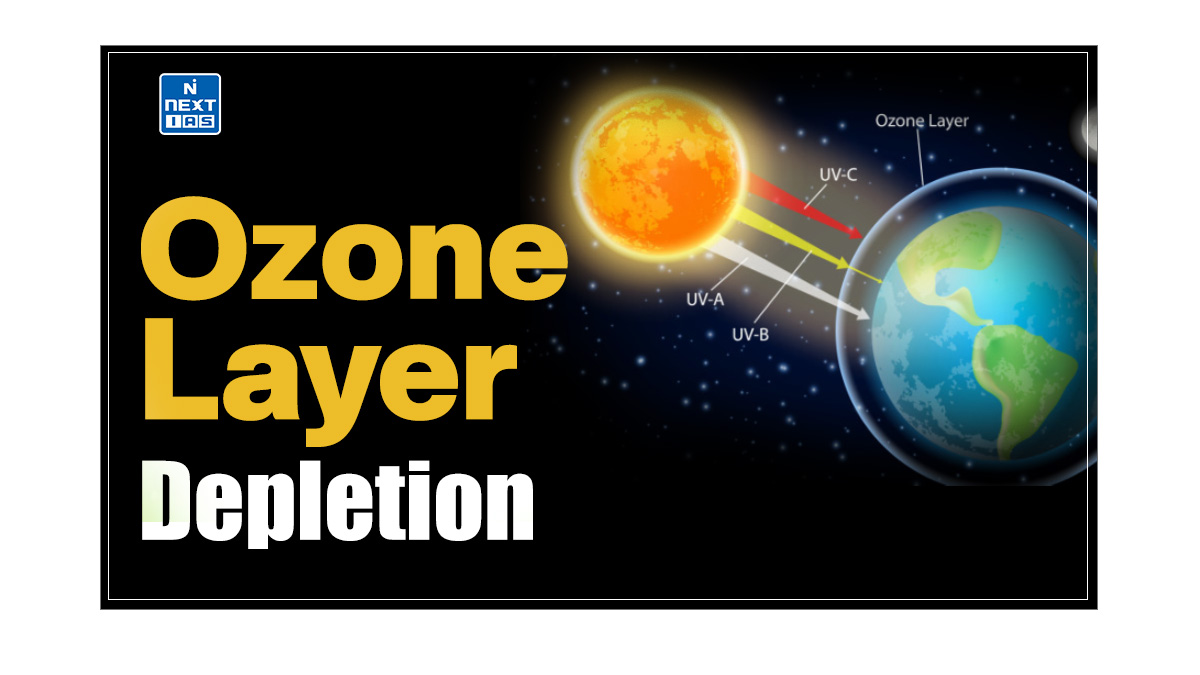
As societies become increasingly industrialised and urbanised, Thermal Pollution has emerged as a significant environmental issue. It has wide-ranging implications for humans, wildlife, and the environment. This article aims to study in detail Thermal Pollution, its major causes and sources, effects, control measures, and other related aspects.
What is Thermal Pollution?
- Thermal pollution is defined as a sudden increase or decrease in the temperature of a natural body of water, which may be ocean, lake, river or pond.
- This sudden change in water temperature is mainly due to anthropogenic activities.
- For example, a power plant takes water from a source, e.g., a river, as a coolant and then discharges the warm water back into the water body.
- Thermal Pollution is a prominent type of Environmental Pollution.
| What is Environmental Pollution? Environmental Pollution refers to the introduction of harmful materials into the environment. In other words, it is the contamination of the physical and biological components of the environment to such an extent that normal environmental processes are adversely affected.Based on the nature of the pollutants and the media they affect, Environmental pollution can be categorised into several types, including Air Pollution, Soil Pollution, Water Pollution, etc. Read our detailed articles on Environmental Pollution, Soil Pollution, Water Pollution, Air Pollution, Noise Pollution, Nuclear Pollution, Marine Pollution, and Plastic Pollution. |
Causes of Thermal Pollution
Some of the prominent causes and sources of thermal pollution can be seen as follows:
- Power, Manufacturing and Industrial Plants: These plants draw water from nearby sources as a coolant and then release warmer water back to the source.
- Soil Erosion: Consistent soil erosion causes water bodies to rise, which makes them more exposed to sunlight.
- Deforestation: Trees and plants prevent sunlight from falling directly on water bodies.
- With deforestation, these water bodies are directly exposed to more sunlight, thus absorbing more heat and raising the temperature of water bodies.
- Runoff from Paved Surfaces: During summer seasons, Urban pavement gets quite hot, which creates warm runoff that gets into the sewer systems and water bodies, increasing their temperature.
- Natural Causes: Volcanoes and geothermal activity beneath the oceans and seas can release warm lava to raise the temperature of water bodies.
- Lightning is another natural cause that can introduce heat into the oceans.
Effects of Thermal Pollution
Varies effects of thermal pollution can be seen as follows:
- Decrease in Dissolved Oxygen Levels: The warm temperature decreases the levels of DO (Dissolved Oxygen) in water.
- The decrease in oxygen may give rise to anaerobic conditions by suffocating plants and animals.

- Growth of Algae: Warmer water allows algae to flourish on surface of water and over the long term growing algae can decrease oxygen levels in the water.
- Surge in Toxins: Constant flow of high-temperature water discharge from industries leads to an increase in toxins in the natural water body.
- These toxins may contain chemicals or radiation that may have a harmful impact on aquatic organisms.
- Biodiversity Loss: Changes in the temperature of water bodies may lead to migration to more adaptable surrounding leading to more clash for limited resources leading to death of many organisms.
- Ecological Impact: A sudden thermal shock can result in mass killings of organisms.
- Little increase in water temperature may increase activity level of some organisms while higher increase in water temperature may decrease the activity level of some.
- Reproductive Systems: As reproduction better happens within a certain range of temperature. Higher temperature can cause release of immature eggs or can prevent normal development of certain eggs.
- Metabolic Rate: Thermal pollution increases the metabolic rate of organisms.
- It may also disrupt the stability of the food chain and change the composition of species.
Thermal Pollution Control Measures
The following are some of the thermal pollution control measures:
- Storing hot water in cooling ponds and allowing the water to cool before releasing it into any water body or back to the plant.
- Warm effluents can be passed through a cooling tower after it leaves the condenser.
- The heat is dissipated into the air and the water can then be discharged into the river or pumped back to the plant to be reused for cooling.
- Create storm water management facilities to absorb runoff or direct it into groundwater, such as infiltration basins and bio-retention systems.
- Dams can be designed such that instead of releasing cold water at the bottom of the reservoir, they release water from the top.
Potential Uses of Thermal Pollution
Though an environmental hazard, thermal pollution can be used to reap economic benefits. Some of the potential uses of thermal pollution can be seen as follows:
- Industrial and space heating.
- Soil warming – biological application.
- Heating greenhouses.
Conclusion
Thermal Pollution represents a critical environmental issue with far-reaching consequences for aquatic ecosystems, water quality, and human well-being. Addressing this issue requires a combination of regulatory measures, technological innovations, and best management practices. By understanding the sources and impacts of thermal pollution and implementing effective strategies for mitigation, societies can work towards protecting water resources and ensuring a healthier environment for future generations.
Frequently Asked Questions (FAQs)
What is Thermal Pollution?
Thermal pollution refers to water quality degradation by any process that changes ambient water temperature. It often occurs when industrial processes or power plants discharge hot water or effluents into water bodies, causing a temperature rise.
How is thermal pollution caused?
Thermal pollution is primarily caused by using water as a coolant in power plants and industrial facilities. Other sources include deforestation (which reduces shading on water bodies), urban runoff, and geothermal energy extraction.
When does thermal pollution take place?
Thermal pollution occurs when water used for cooling purposes is returned to a natural water body at a higher temperature than originally, disrupting the local ecosystem.
What are the effects of thermal pollution?
– Decreased oxygen levels in water, harming aquatic life.
– Altered species composition, as some organisms, may not survive temperature changes.
– Disruption of breeding cycles in fish and other aquatic species.






